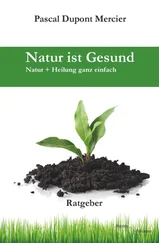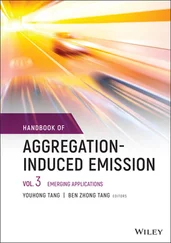
where TPI represents the total polyphenol index.
These rules, based on the solubilization of KHT, which is independent of the medium's composition and colloidal rearrangement, are applicable to monitoring cold stabilization treatments. However, they do not check the effectiveness of treatments via addition of crystallization inhibitors, such as metatartaric acid ( Section 1.7.6) or mannoproteins ( Section 1.7.7). Only crystallization tests, with or without added KHT, are able to show the effect of protective colloids, even though the values obtained are lower than the actual stabilization temperatures.
1.6.6 Using Mextar ®Calculation Software
This is a completely different approach to forecasting tartrate instability, which is still one of the main problems in winemaking.
By transposing methods used for crystallization in solution, Devatine et al . (2002) developed Mextar, a software program that offers a reliable measure of the stability or degree of instability of a wine by means of calculations using analysis data on the constituents of the wine's acidity. It is, thus, theoretically possible to obtain an accurate assessment of the need to subject a wine to stabilization treatment. The calculation also predicts changes in chemical composition during spontaneous or induced transformations. Finally, Mextar can be used to model changes in a wine's acidity by simulating acidification and deacidification operations, as well as malolactic fermentation, and predicting the pH and total acidity values following these processes.
It will be interesting to monitor the development of this system and its application to different types of wine.
1.7 Preventing Tartrate Precipitation
This section will describe the main bitartrate stabilization technologies used for wine (see also Section 12.3.2).
Whatever the technology used, and regardless of any treatment used preparatory to bitartrate stabilization, cold‐treated wine must be clean, i.e. not excessively contaminated with yeast or bacteria, as is often the case with wines stored in large tanks. These wines should, therefore, be filtered on a simple continuous earth filter. Another advantage of filtration is the elimination of part of the protective colloids. Fine filtration is not useful at this stage and is certainly not recommended, as there is a risk of eliminating microcrystals likely to act as crystallization nuclei.
1.7.2 Slow Cold Stabilization, Without Tartrate Crystal Seeding
This is the traditional technology for the bitartrate stabilization of wine. Before wineries were equipped with refrigeration and air‐conditioning systems, wines were simply exposed to natural cold by opening the cellar doors during the coldest winter weather.
The temperature may decrease at varying rates. It is gradual if the wine is chilled by means of a submerged refrigerating rod in the tank. It may be much faster in a normal installation (Section 12.4.4, Figure 12.1) including a plate heat exchanger to recover energy from the treated wine and reduce the temperature of wine to −4°C more rapidly prior to treatment. It is known (Section 12.4.4) that faster cooling promotes more complete precipitation of the tartrate in the form of small crystals.
Heat‐insulated tank rooms, equipped with heating/cooling systems, are also used. The wines are stored in uninsulated tanks with a high heat transfer coefficient, such as stainless steel. The entire room is maintained at the desired temperature, keeping the wine at a negative temperature for 8–10 days (white wines) or up to several weeks, in the case of red wines (Blouin, 1982).
The treatment temperature is generally defined by the following rule:
(1.12) 
This rule is deduced from the equation defining the freezing temperature of wine according to its alcohol content:
(1.13) 
Slow stabilization is tending to evolve toward pseudo‐contact technology by seeding with 30–40 g/hl of cream of tartar, agitating for 36 hours and ensuring that the wine does not oxidize. Paddle agitators with variable speed motors are the most efficient, also ensuring that only a minimal amount of oxygen is dissolved in the wine. There is a significant risk of excessive oxidation as gases dissolve more readily at low temperatures. It is recommended that the agitation rate should be monitored by measuring the optical density at 420 nm. In a white wine that has not suffered oxidation, this value decreases by 10% during cold stabilization. Seeding with 20–40 g/hl of KHT should be envisaged if, for example, natural chilling of the wine has produced some crystallization, so that it is in a less supersaturated state.
Slow stabilization often causes loss of color (OD at 520 nm) in both red and white wines. It is therefore recommended to reduce the length of treatment by adding small particles of cream of tartar, which are easier to maintain in a homogeneous suspension. Another advantage of seeding is that the wine may be maintained at a less cold temperature (−2°C instead of −4°C).
It has been demonstrated on a production scale (360 hl tanks) that the stabilization time for a white wine treated with 30 g/hl of bentonite, maintained at −2°C and seeded with 30 g/hl of cream of tartar, may be reduced to 62 hours (including 24 hours without agitation before filtration), instead of six days for the standard treatment. Under these conditions, the wine was found to be perfectly stabilized ( T Sat= 7°C).
1.7.3 Rapid Cold Stabilization: Static Contact Process
This technique has the major advantage of reducing the artificial cold treatment of wine to four hours, and sometimes less for white wines. Furthermore, the wine no longer has to be maintained at negative temperatures, but only at 0°C, which minimizes not only energy consumption but also frost accumulation on the equipment. A heat‐insulated, conical‐bottomed tank known as a crystallizer is used. It is equipped with a drain to remove excess crystals at the end of the cycle.
Such high‐performance levels can only be achieved with this type of rapid stabilization treatment by seeding with large quantities of cream of tartar (400 g/hl). This large mass of crystals, with a small initial particle size, must absolutely be maintained in suspension by an agitator, taking care to avoid any unwanted aeration ( Section 1.5.2). It is also advisable to blanket the wine with inert gas, or at least use an airtight crystallizer.
Treatment effectiveness is monitored by the rapid response analysis described in Section 1.6.4. If the results are satisfactory, agitation is stopped in order to allow most of the tartrate to settle in the conical bottom of the crystallizer. Complete clarification is not easy to obtain. Great care must be taken in using centrifugation as the crystals are highly abrasive. Good results are obtained with horizontal plate filters, using the crystals themselves as the filter layer. Of course, all these operations must be carried out at 0°C.
The static contact process is a very flexible system. It is possible to run two to three cycles per day with volumes of 50–100 hl in each batch. This technology is advisable for small‐ and medium‐sized wineries. The weak point of this system is the price of cream of tartar, but costs may be reduced by recycling tartrate.
Читать дальше















